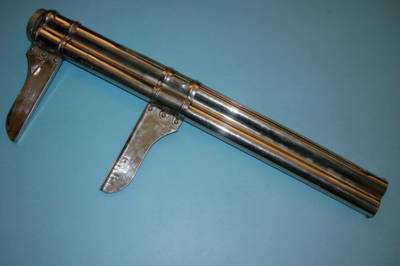
The Antique of the Week is a good example of the eclectic mix of collectibles that find their way into the Rednersville Country Store from time to time. This item isn't so much country, as it is of the "old country"--made in Austria, a work of art that likely came to North America with European immigrants before World War II.
This lamp is a one of a kind work of art by Vally Wieselthier, a prominent artist of the
Wiener Werkstaette, or Vienna Workshop.
In June 1903, the Wiener Werkstaette (WW) was founded in the form of a “productive co-operative of craftsmen” by Josef Hoffmann and Kolo Moser under the patronage of the Viennese industrialist Fritz Waerndorfer. The company’s aim was to reform the contemporary applied arts with works of exceptional quality.
The idea of an equality of applied arts and the traditionally “free” fine arts, on the one hand, and the penetration of all areas of life with arts, on the other, were the basic principles of Wiener Werkstaette. The proclaimed aim was to surround the daily life with beautiful items, and thus to create a “total work of art”. Within three decades, a group of highly qualified architects and craftsmen succeeded in realising their dream of the “total work of art” in the form of buildings and interiors. The most significant example is Palais Stoclet in Brussels, which was designed by Josef Hoffmann and entirely furnished by the Wiener Werkstaette.
The field of activity of the Wiener Werkstaette was extensive: beside furniture they produced tableware, cutlery, jewellery, enamels, ceramics, and pieces of glass, book covers, wall papers, different types of papers, but also post cards and short-lived fashions were part of their oeuvre.
The Wiener Werkstätte, an eclectic mix of artisans and designers, had a clear aim and purpose: to make all facets of human life into one unified work of art. Their products ranged from architecture to minor utensils, and comprised all fields of domestic culture.
Notable amongst these artists for her work in glass and ceramics was Vally Wieselthier (1895-1945) who began working at the Wiener Werkstaette in 1917, during her studies at the Vienna Arts and Crafts School. At first she worked on unique ceramic articles and series in the Künstlerwerkstätten, and later worked on commissions in her own studio.
The foundation of the Wiener Werkstaette’s own ceramics department in 1917 brought with it a new era of creativity above all in the person of the artist Vally Wieselthier. In contrast to the partly baroque forms of her teacher Michael Powolny, she developed a new language of form and uniquely contributed to a revival of this genre. The original ceramics of the 1920s on show are among others by the artists Vally Wieselthier, Susi Singer and Gudrun Baudisch. Their ceramics stand out due to their expressive-dynamic colouring and reflect the sculptors’ playful and experimental applications of glazes as a means of artistic expression.
Vally Wieselthier, ceramist, sculptor, and designer is considered

internationally one of the most important representatives of ceramic sculpture during the 20's and 30's. Her pieces are in museums, and have sold at
international auction houses. This unique work of functional art is being offered for sale by
auction on eBay, where we extend this once-in-a-rare-while purchase opportunity to a worldwide audience of experienced collectors of art nouveau.




